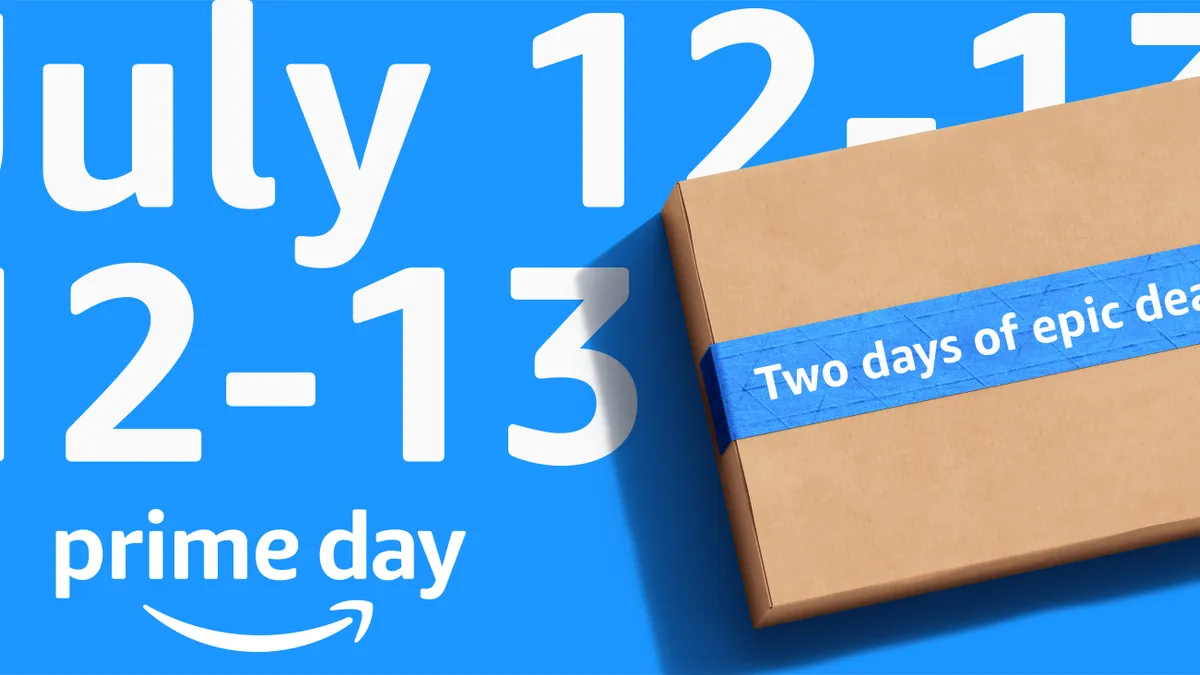Dive Brief:
-
With its 2022 Prime Day event over, Amazon on Thursday said that, globally, Prime members (the only ones allowed to shop the deals) bought more than 300 million items, surpassing other years. The e-retailer declined to provide the event’s revenue.
-
Still, at a time of peak inflation, consumers kept much of their Prime Day shopping to essentials and smaller purchases, according to Numerator, which found that just 5% of items sold for over $100, while 58% sold for under $20.
-
As in previous years, Prime Day lifted other U.S. retailers as well, according to the Adobe Digital Economy Index. U.S. online spending nearly reached $12 billion ($6 billion on Tuesday, $5.9 billion on Wednesday), an 8.5% increase over last year. Stores played a role, with conversion for retailers offering curbside pickup and BOPIS up 20% compared to an average day in June, Adobe said by email.
Dive Insight:
The burst of online spending during Prime Day was not quite as robust as it seems, given that inflation in the U.S. reached 9.1% in June, according to the latest consumer price index report from the Bureau of Labor Statistics.
Moreover, inflation’s influence went beyond undermining the raw headline numbers to reshaping consumer behavior. A little over a third of Prime Day customers waited for the sale to get a certain item at a discount, while 28% passed on a good deal because it wasn't a necessity, Numerator found.
“The mix of things bought is also of interest,” GlobalData Managing Director Neil Saunders said by email, noting that Amazon flagged household essentials as a best-selling category. “Diapers also did well. These things are staple purchases rather than impulse purchases, which suggests more consumers are focusing on things they need rather than things they want.”
That will almost certainly mean lower sales of such items in coming weeks, as people work through what they’ve stocked up on at home, he noted.
Consumers were also planning ahead, and leveraging Prime Day to check things off shopping lists beyond household essentials, according to Natalie Kotlyar, who leads the retail industry group at consultancy BDO. This year, Amazon forged partnerships with top brands like Apple and KitchenAid that helped draw people in, she said by phone.
“Now more than ever, with inflation, consumers are looking to buy products that they truly need,” she said. “Some did buy products for either back to school — again, essential products for back to school — and some even started to buy products for for the holiday season, especially where there were great deals to be had.”
Amazon once again this year focused its press release on its third-party sellers, which it says are mostly small- and medium-sized businesses. The company’s marketplace has long been responsible for most of the goods sold on its site, and provides lucrative streams of revenue in the form of fulfillment and warehousing fees and, increasingly, advertising sales.
This year, customers spent over $3 billion on more than 100 million small business items included in the “Support Small Businesses to Win Big sweepstakes,” which ran before Prime Day, from June 21 through July 11, per Amazon’s release.
Speculation continues over whether Amazon would schedule a second Prime Day this year, something it has never done and declines to comment on. BDO’s Kotlyar believes the e-commerce giant will be content to stage a Black Friday event, with some deals offered only to Prime members, without branding it “Prime Day.” Others are not so sure.
Consumers are pulling back their online spending and plan to spend less in the next six months, according to research from Attest. “With such uncertainty, it is little surprise that Amazon could potentially hold a second Prime event at the end of this year in order to maximize sales,” Attest CEO Jeremy King said by email.













